Abstract
Although there have been a number of studies on the ingestion of asbestos, few studies exist on how the chrysotile asbestos itself is altered by the exposure to the acid stomach environment. This study has found that there are changes in the physical, chemical and surface properties of chrysotile asbestos as a result of exposure to water, strong acids, and simulated gastric juices. It was observed that the charge on the surface (the zeta potential) is changed from positive to negative; the surface becomes silicalike; and the magnesium is lost from the fibers of asbestos upon exposure to water and acid. It was also noted that the smaller the fiber diameter, the faster the loss of the magnesium. Notable among the changes in physical properties is a change in the refractive index. This means that asbestos exposed to acids or water may not be detectable using the dispersion staining techniques that identify asbestos based on the refractive index. Other physical property changes include the destruction of the gross crystallinity of the fibers. The x-ray diffraction signal disappears when fibers are exposed to acid. However, this study shows that the fibers may still be detected by electron diffraction. It appears that upon acid exposure, the magnesium ions are leached out, leaving a magnesium-free silica network. A positive ion, possibly the proton (H+) or the hydronium ion (H3O+), replaces the lost magnesium ion.
Full text
PDF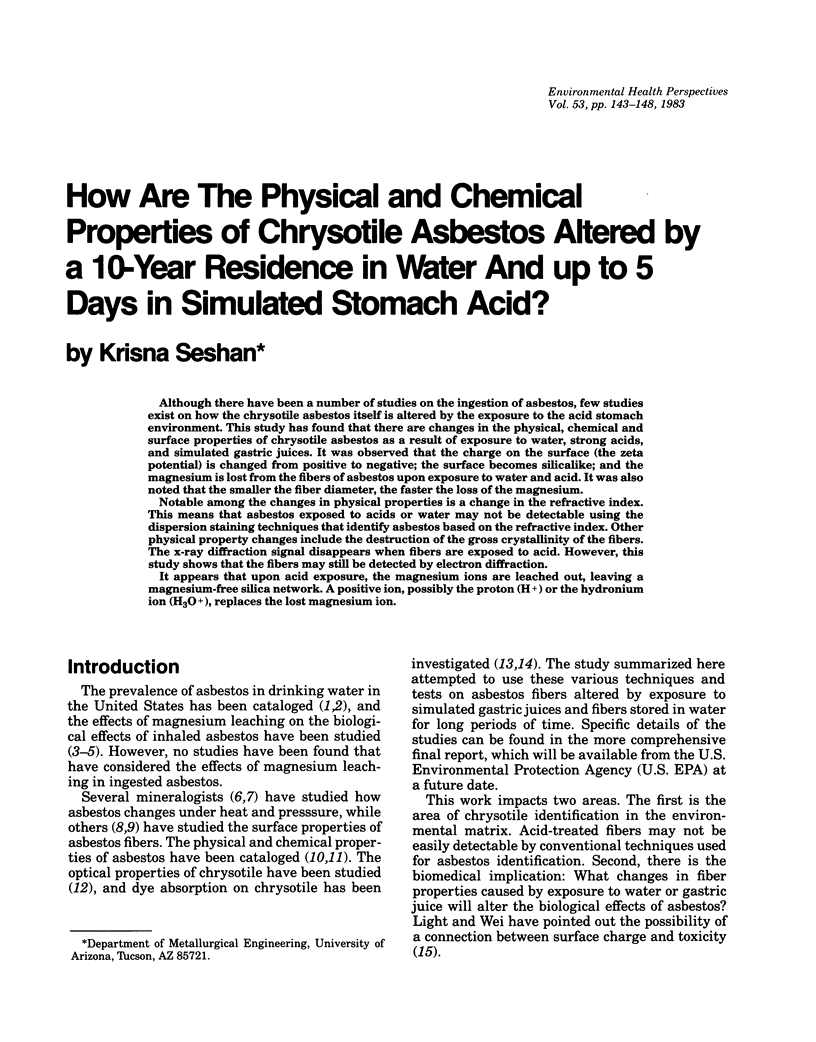
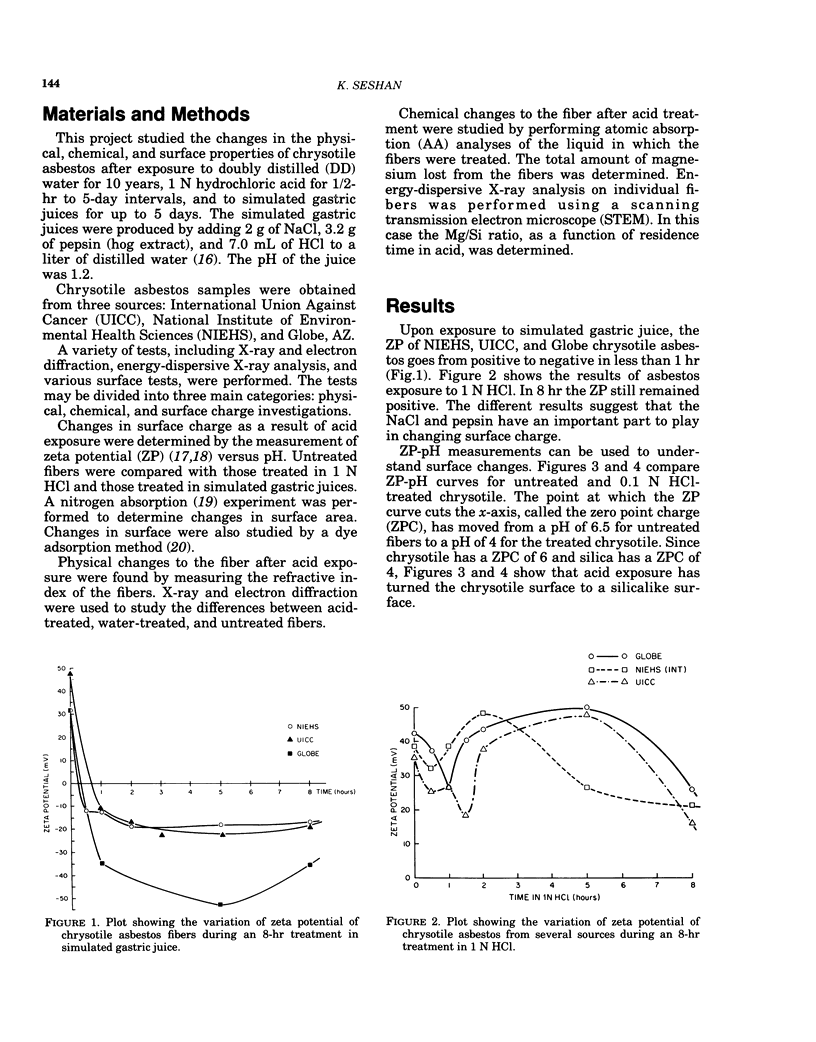
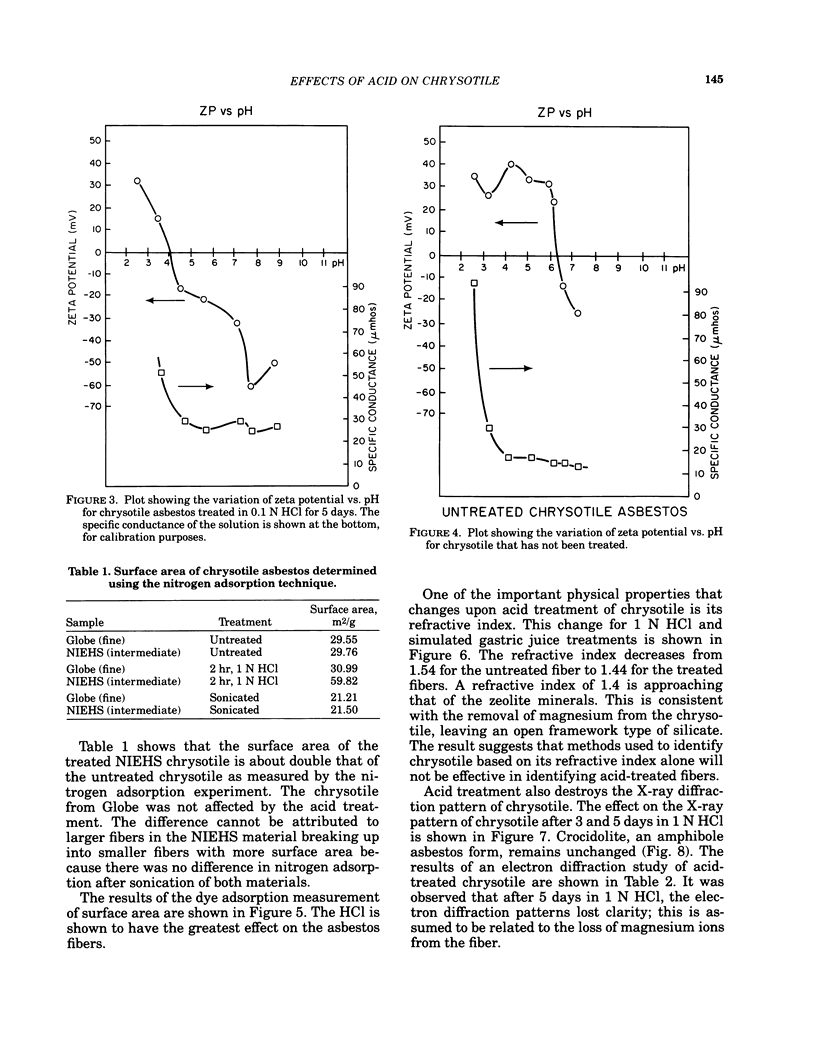
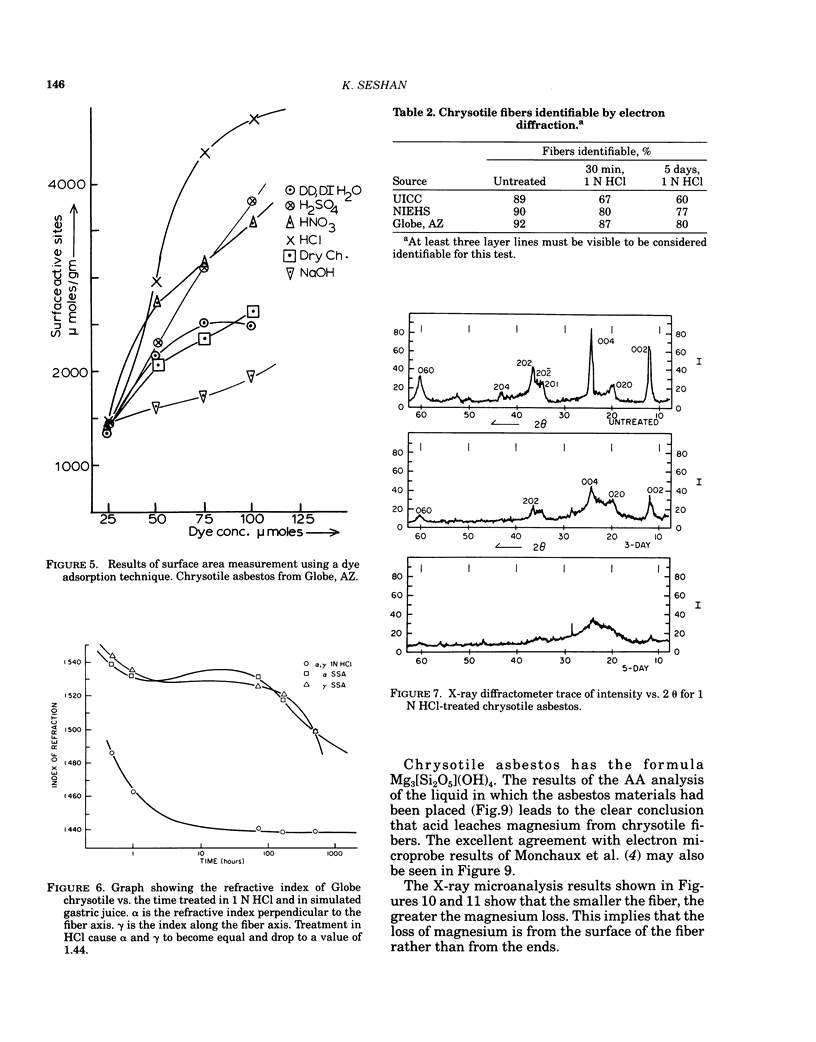
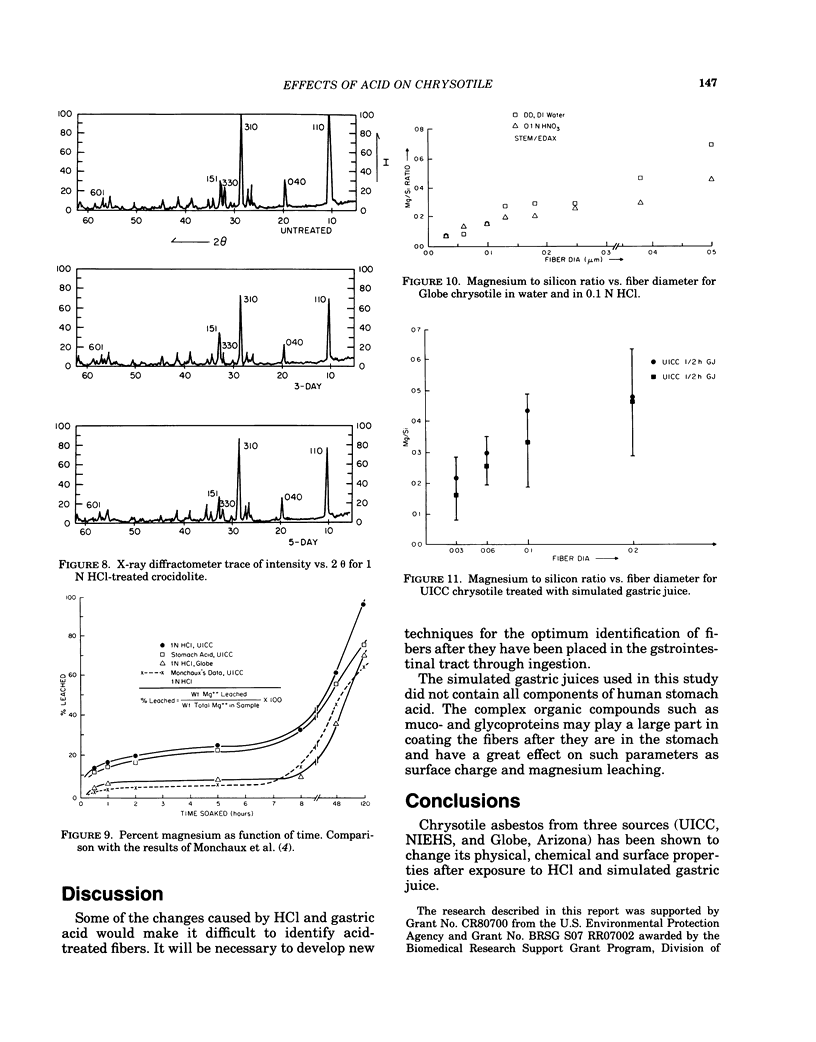
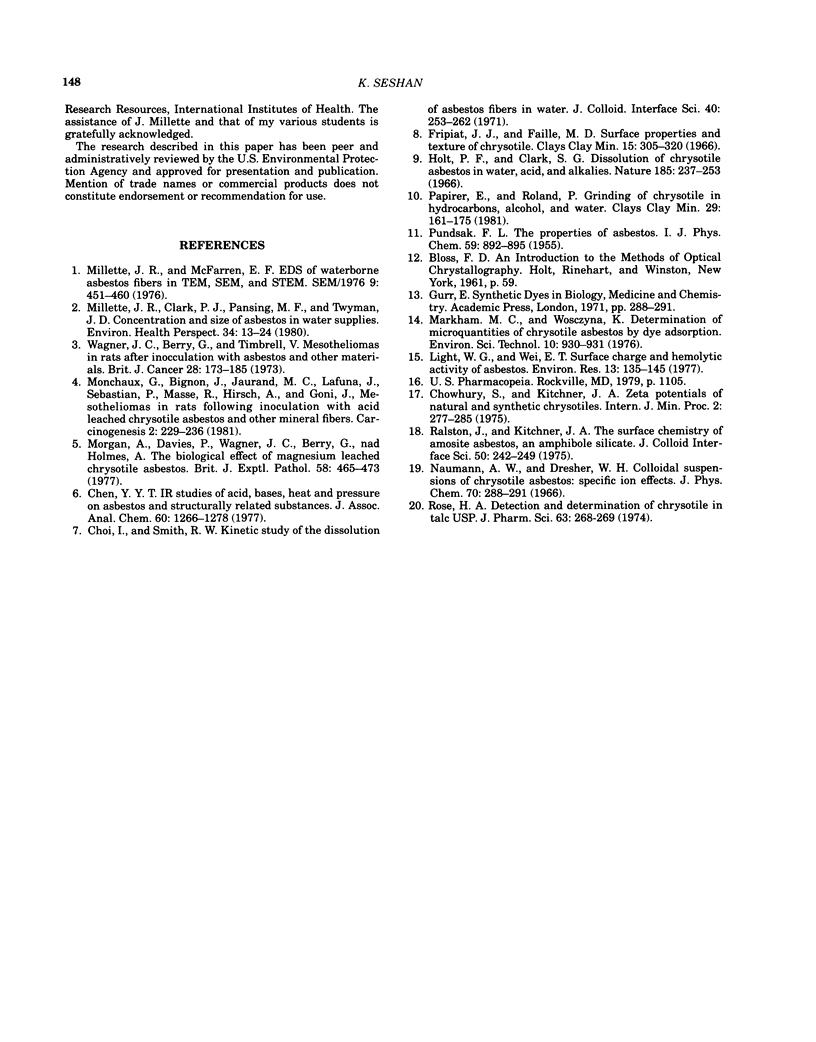
Selected References
These references are in PubMed. This may not be the complete list of references from this article.
- Light W. G., Wei E. T. Surface charge and hemolytic activity of asbestos. Environ Res. 1977 Feb;13(1):135–145. doi: 10.1016/0013-9351(77)90012-3. [DOI] [PubMed] [Google Scholar]
- Millette J. R., Clark P. J., Pansing M. F., Twyman J. D. Concentration and size of asbestos in water supplies. Environ Health Perspect. 1980 Feb;34:13–25. doi: 10.1289/ehp.803413. [DOI] [PMC free article] [PubMed] [Google Scholar]
- Monchaux G., Bignon J., Jaurand M. C., Lafuma J., Sebastien P., Masse R., Hirsch A., Goni J. Mesotheliomas in rats following inoculation with acid-leached chrysotile asbestos and other mineral fibres. Carcinogenesis. 1981;2(3):229–236. doi: 10.1093/carcin/2.3.229. [DOI] [PubMed] [Google Scholar]
- Morgan A., Davies P., Wagner J. C., Berry G., Holmes A. The biological effects of magnesium-leached chrysotile asbestos. Br J Exp Pathol. 1977 Oct;58(5):465–473. [PMC free article] [PubMed] [Google Scholar]
- Rose H. A. Detection and determination of chrysotile in talc USP. J Pharm Sci. 1974 Feb;63(2):268–269. doi: 10.1002/jps.2600630220. [DOI] [PubMed] [Google Scholar]
- Wagner J. C., Berry G., Timbrell V. Mesotheliomata in rats after inoculation with asbestos and other materials. Br J Cancer. 1973 Aug;28(2):173–185. doi: 10.1038/bjc.1973.134. [DOI] [PMC free article] [PubMed] [Google Scholar]


